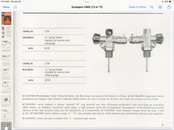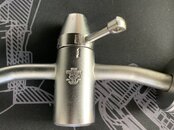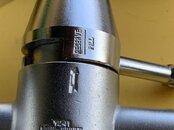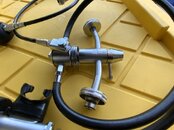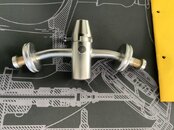Not vintage but current condition of Lauderdale by the Sea pier.

You are using an out of date browser. It may not display this or other websites correctly.
You should upgrade or use an alternative browser.
You should upgrade or use an alternative browser.
Check this vintage ad out...
- Thread starter Open Ocean Diver
- Start date
Please register or login
Welcome to ScubaBoard, the world's largest scuba diving community. Registration is not required to read the forums, but we encourage you to join. Joining has its benefits and enables you to participate in the discussions.
Benefits of registering include
- Ability to post and comment on topics and discussions.
- A Free photo gallery to share your dive photos with the world.
- You can make this box go away
Scubapro 1965 catalogue, valve with an integrated gauge allowing diver to know how much air is in his take it all times. Interesting
Interesting but not very useful. The scale was very small and the mechanism was not very reliable in salt water, which resulted in having very little practical value.
I guess you would have to remove your tank to take a peek.Interesting but not very useful. The scale was very small and the mechanism was not very reliable in salt water, which resulted in having very little practical value.

Interesting but not very useful. The scale was very small and the mechanism was not very reliable in salt water, which resulted in having very little practical value.
Still, the idea was a good one. It was redundancy in its earliest stage I guess. I know of another 'weird' contraption, which would have been quite good I think : an SPG readable front the front and above. So your buddy could read it, as well as yourself. It was fitted on an early French scuba, the "Poumon d'Eau" (i.e aqua-lung ever heard of that one ? lol), designed by Georges Herail, in the 50s, in Toulouse (S-W France, nowadays home the Airbus plane). Here's a picture (said SPG on the left).
Link to a full article about the Poumon d'eau (in French only, sorry, but I don't know of any documentation in English about this scuba)
antique diver
Registered
Relatively few of us (at least in my area) were using submersible pressure gauges in 1965, and the built-in gauge on the valve at least gave us an idea of approximate beginning pressure before the dive.
We weren't pulling the tank off occasionally for a pressure peek during the dive. Instead, we just depended somewhat on past experience of time and depth combinations, and hoping the reserve would give us ample warning.
BTW, that didn't always work out too well!
We weren't pulling the tank off occasionally for a pressure peek during the dive. Instead, we just depended somewhat on past experience of time and depth combinations, and hoping the reserve would give us ample warning.
BTW, that didn't always work out too well!

Back in the 1960s, many of the regulators didn't even feature an HP port, such as the early Poseidon Cyklon models, which only had a single LP port for a second stage.Relatively few of us (at least in my area) were using submersible pressure gauges in 1965, and the built-in gauge on the valve at least gave us an idea of approximate beginning pressure before the dive.
Instead, a double reserve manifold from Aqua-Sport / Poseidon was offered which had a then-radical feature, for its time -- an HP port (seen in last photo) where a new-fangled and a quite expensive SPG, for its its time, could be added . . .
Attachments
Interesting but not very useful. The scale was very small and the mechanism was not very reliable in salt water, which resulted in having very little practical value.
I guess you would have to remove your tank to take a peek.
It was actually very useful in the dive shop to tell which tanks need filling.
I felt that it was very reliable to tell that a tank needed filling, but the opposite wasn't true. I didn't trust it as much to tell me that a cylinder was actually full. It wasn't precise enough to tell me that it was truly full. If it appeared to be full, but I wasn't sure, then I would double check with a tank checker.
edit: anyone recognize what she’s holding with her right hand.

antique diver
Registered
Try moving the letters around in the last word, and this will make more sense.
BTW, the item in lower left looks more like a metal detector to me.
Similar threads
- Replies
- 37
- Views
- 4,050
- Replies
- 25
- Views
- 1,958
- Replies
- 0
- Views
- 345



